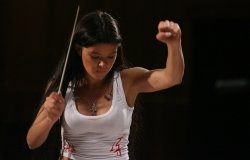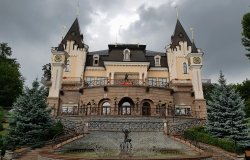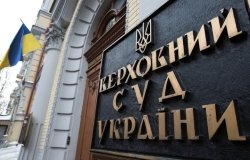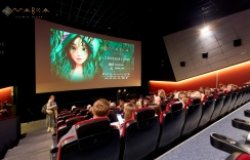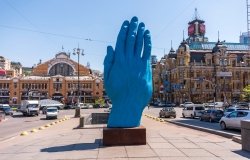
A blog of the Kennan Institute
Looking Beyond the Apocalypse from the Stage
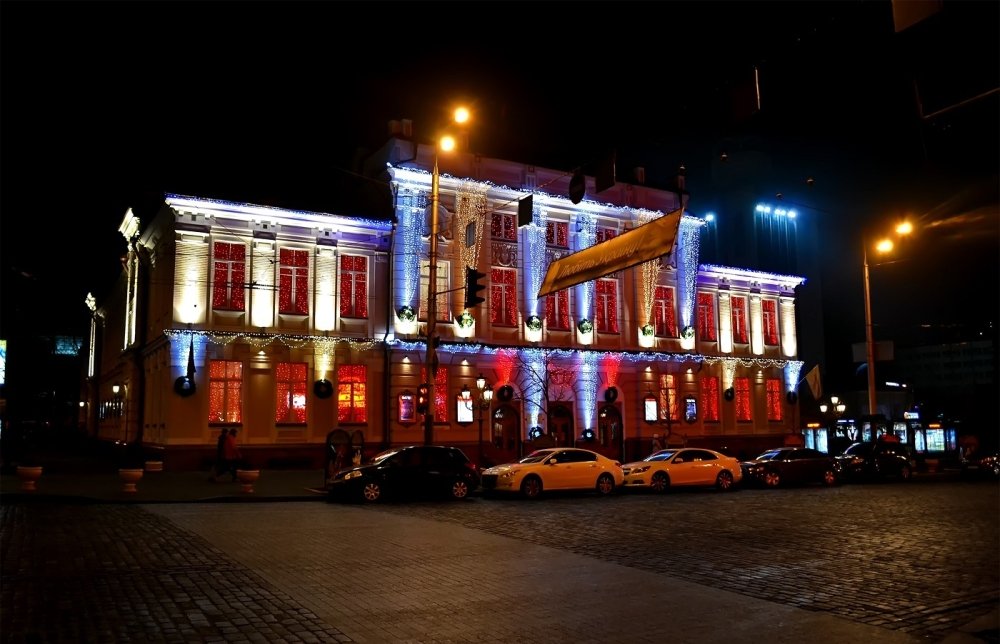
Roman Hryhoriv and Illia Razumaiko’s Chornobyldorf. An Archaeological Opera is enjoying renewed life, with recent performances at Kyiv’s National Academic Operetta Theater and at Liverpool’s Eurovision Cultural Program. A coproduction with Vienna’s Musiktheatrtagetage, July performances at Frankfurt-am-Main’s Theater der Welt are also on tap.
Premiered in November 2020 at the Mystetsky Arsenal, Kyiv’s leading arts center, Hryhoriv and Razumaiko’s multi-media expedition through seven post-apocalyptic tales has caught attention throughout Europe, with performances in Austria, Germany, and England. Following the show’s appearance at the Huddersfield Contemporary Music Festival last November, The Times (of London) declared the work to be “a modern masterpiece everyone needs to see,” and an “extended scream of rage, an elegy for lost humanity, a warning about nuclear annihilation, a brilliant meshing of film, dance, and song” (November 21, 2022). BBC Radio 3 featured the work on its New Music Show in early March.
As noted in a previous Focus Ukraine blog post, Hryhoriv and Razumiko are among the most creative composers on the contemporary Ukrainian scene. Their grand multi-media productions combine traditional Ukrainian instruments (such as the 64-string bandura) with contemporary electronic music and video as well as with classical favorites. Their works have won praise throughout Europe.
In Chernobyldorf, the composers blend dance, physical theater, video, text, and music to set forth seven stories of human folly entitled “Elektra,” “Dramma der Musica,” “The Little Accordion Girl,” “Rhea,” “Messe de Chornobyldorf,” “Orfeo ed Euridice,” and “Saturnalia.” Together, these “novels” provide an elegy for lost humanity and a warning for the future. Khrystyna Slobodianiuk choreographed this production, which was conducted by Roman Hryhorivand produced by Olga Diatel and Georg Stecker. The 2022 Russian invasion amplifies the opera’s cataclysmic tone.
The Kyiv performances took place at the beloved National Academic Operetta Theater. A landmark from an era when theaters were viewed as confections, the theater has endured calamities and tragedies, despite its grand appearance. Constructed with charitable contributions at the turn of the 20th century as the Trinity People’s House, the building initially housed the Kyiv Society of Literacy and other artistic organizations, including, between 1907 and 1917, the M. K. Sadovskyi theater. Several educational, sports, political, and labor organizations used the premises during and after the Bolshevik Revolution.
A much-decorated soldier, actor Mykola Sadovskyi (Mykola Tobilevych) used his standing within the army to sponsor amateur theatrical performances on military bases. These shows promoted Ukrainian language theater at a time when that language had been banned in public performance. His company eventually moved to Kyiv, where his theater became a focal point for Ukrainian language theatrical life. Sadovskyi relied on artists from several communities (many of his musicians were Jewish, for example) and attracted young talent trying to express the realities of their lives (such as a fledgling Les Kurbas).
The Soviet government restored musical theater in 1934, establishing a venue for performances of revolutionary tales set to music. That theater evacuated to Kazakhstan during World War II, with a noteworthy company specializing in light musical comedy coalescing during the post-war years. Hryhoriv and Razumaiko’s Chornobyldorf. An Archaeological Opera thus represents a return to the theater’s earlier existence as a home to Ukrainian theater that pushes the boundaries of acceptability.
In 2021, a jury for the international Music Theatre NOW network praised Chornobyldorf for its vision of a post-apocalyptic future. The work, the jury noted, “gives you an overwhelming, again and again surprising, archaic as well as contemporary artistic vision of what life could be like after an apocalypse. It’s a real spectacle which combines a wealth of rituals, visuals, movements and sounds you think you have somehow and at the same time never experienced. The gravitational force of the production pulls the audience in to its own world and at the same time invites individual reflections about the state of society.” Following the Russian invasion, such theater speaks even more loudly to our times.
The opinions expressed in this article are those solely of the author and do not reflect the views of the Kennan Institute.
See our newest content first.
Subscribe to receive the latest analysis from Focus Ukraine.
About the Author

Blair A. Ruble
Former Wilson Center Vice President for Programs (2014-2017); Director of the Comparative Urban Studies Program/Urban Sustainability Laboratory (1992-2017); Director of the Kennan Institute for Advanced Russian Studies (1989-2012) and Director of the Program on Global Sustainability and Resilience (2012-2014)

Kennan Institute
The Kennan Institute is the premier US center for advanced research on Eurasia and the oldest and largest regional program at the Woodrow Wilson International Center for Scholars. The Kennan Institute is committed to improving American understanding of Russia, Ukraine, Central Asia, the South Caucasus, and the surrounding region though research and exchange. Read more


